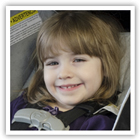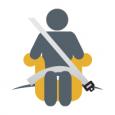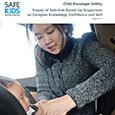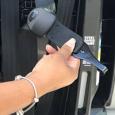You are here
Passenger Safety for Little Kids
Passenger Safety for Little Kids
 Ready for a Forward-Facing Car Seat?
Ready for a Forward-Facing Car Seat?
- When forward facing is safe. You are ready for a forward-facing car seat after your little passenger is age 2 or more and has outgrown the height or weight limits on the rear-facing car seat.
Types of Forward-Facing Car Seats
- Convertible car seat. This type of seat can be used in a rear-facing position first, and then turned to face forward when your child is big enough, after age 2 or more. If you have one of these seats, you do not need to buy a new car seat until your child is ready for a belt positioning booster seat.
- Forward-facing-only car seat. This type seat is used in only one direction and has a 5-point harness and top tether.
- Combination seat. This is a forward-facing seat with a 5-point harness and top tether, and can change into a booster seat when you remove the harness.
- 3-in-1 car seat. This can be used first in a rear-facing position, next in a forward-facing position and finally as a booster seat. Carefully read the labels if you decide to use a combination seat or a 3-in-1 car seat. The labels will tell you when to remove the harness and switch to a booster seat.
Installing Your Forward-Facing Car Seat
- Seat belt or LATCH. Install your forward-facing car seat in a back seat using one of two systems: either a top tether and locked seat belt or a top tether with lower attachments (LATCH). Both systems are safe, but don’t use both at the same time.
- The important tether. All forward-facing car seats must be installed using a top tether. The top tether reduces the forward motion of the car seat in a crash. Your car’s owner manual will tell you exactly where the anchor is in your car. There are usually three to pick from. It could be on the back of or under the seat in an SUV, on the shelf behind the headrest or even on the ceiling. Look for a top tether anchor in your car before you select the location for your car seat.
- LATCH- Check the position. Your vehicle owner’s manual shows the approved LATCH seating positions in your car. Not all seating positions have lower anchors, but they all have seat belts. Once you find the lower anchors, the tether anchor will be right there!
- LATCH – Check weight limits. When the weight of your car seat plus the weight of your child equals 65 pounds, you need to stop using LATCH and switch to using a seat belt with the tether.
- Get a snug fit. Make sure the car seat is snug enough to pass the Inch Test. A properly installed car seat should not move more than one inch side to side or front to back when pulled at the car seat’s belt path.
Four Steps to the Right Fit
- Place your child in the seat. Your child’s back and bottom should be flat against the car seat. Do not put anything behind or underneath them, such as a blanket or small pillow.
- Check the harness straps. Make sure that the harness straps come through the car seat’s slots at or above your child’s shoulders.
- Buckle and tighten the harness so it is snug. Do the Pinch Test to make sure you cannot pinch the harness strap at your child’s shoulders. You will need to loosen and tighten the harness each time you put your child in the car seat to get a snug fit. Check out the Pinch Test video.
- Position the chest clip. It needs to be level with your child’s armpits.
Tips for Moving to a Booster Seat
- Don’t be in a rush. Your child is safer in a forward-facing car seat with a harness and top tether, so wait until your child reaches the weight or height limit of the car seat before moving her into a booster seat. When you keep your child forward facing in a harness, there is more protection than using a booster seat with lap and shoulder belt or a seat belt alone.
- When it is time. Once your child outgrows the harness of a forward-facing convertible car seat, forward-facing-only car seat, or combination car seat, it’s time to move to a booster seat. Check out the video.
- Combination seat? If you are using a combination car seat or a 3-in-1 car seat, there’s no need for a new seat. Just follow the seat directions for changing the seat into a booster.








